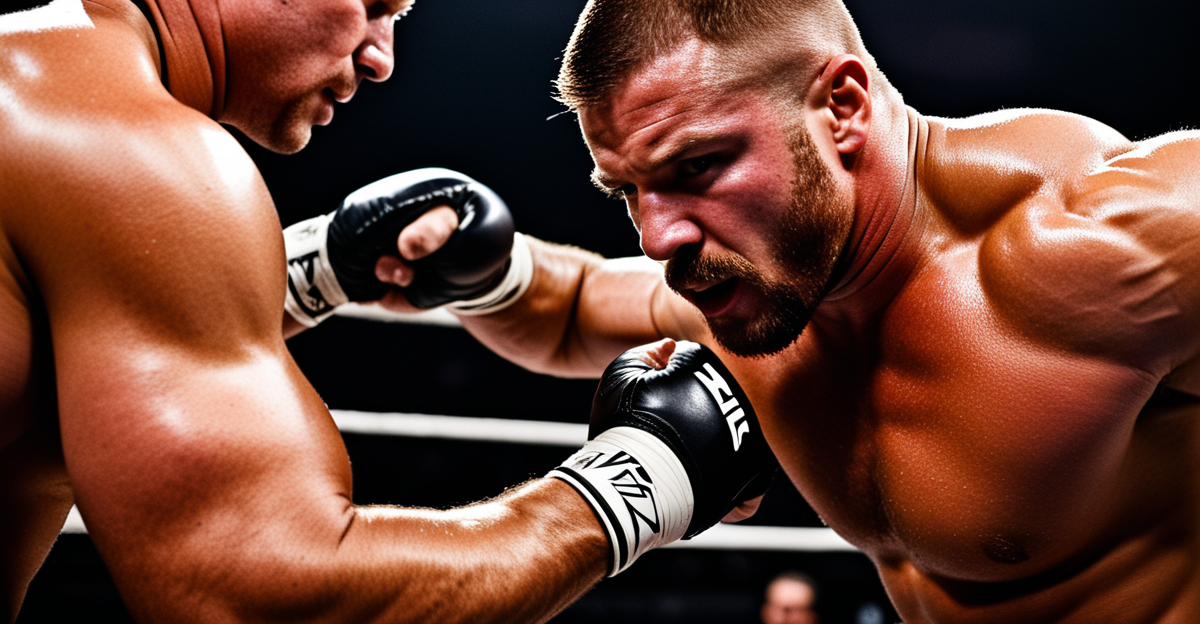Understanding Advanced Resistance Training for Wrestlers
Resistance training is crucial for wrestling performance, enhancing strength, endurance, and agility. Wrestlers rely heavily on their physical prowess, and advanced resistance training can significantly improve competitive success.
Key muscle groups targeted in resistance training include the core, legs, and back. Strength in these areas allows wrestlers to execute throws, holds, and lifts more effectively. Elite wrestler training routines often focus on exercises like squats, deadlifts, and power cleans, which are integral to strengthening these core areas.
Also to read : Elevate your game: key strategies for wheelchair basketball players to perfect their chair configuration
For wrestlers, maintaining an edge means engaging in varied resistance routines, incorporating techniques that confound opponents through superior physical conditioning. Wrestlers who invest in expert-driven training see advancements not only in strength and power but in the overall execution of wrestling techniques.
Essential Techniques for Strength Development
In wrestling, strength development techniques are fundamental to enhance performance. Within these techniques, resistance exercise modalities play a crucial role in building the physical foundation essential for success.
Have you seen this : Top tips for football players to minimize concussion risk
Olympic Weightlifting for Wrestlers
Olympic weightlifting offers numerous benefits to wrestlers, particularly by enhancing overall power and coordination. Key lifts, such as the snatch and clean & jerk, are instrumental in developing explosive strength. These movements mimic the quick, powerful actions needed during a match. Wrestlers should focus on mastering proper technique and prioritize safety to prevent injuries, ensuring long-term athletic development.
Powerlifting Fundamentals
Powerlifting is integral to wrestling strength training, emphasizing core lifts like squats, deadlifts, and bench presses. These exercises are crucial for building foundational strength across key muscle groups. When creating a powerlifting routine tailored for wrestling, the principle of progressive overload must be adhered to. This method ensures ongoing development by gradually increasing weight, volume, or intensity, aligning with wrestling performance goals.
Plyometrics and Explosive Training
Explosiveness is a core component in wrestling success. Plyometric exercises, such as box jumps and medicine ball throws, effectively enhance this attribute. These activities train fast-twitch muscle fibres, fostering quicker and more forceful movements in matches. Implementing safety protocols and progressions in plyometric training is essential to avoid injuries and maximize benefits.
Sample Training Plans
Creating effective training plans is essential for wrestlers aiming to achieve peak performance during competitions. A well-structured weekly schedule that incorporates varied resistance techniques is crucial for balanced development and competition readiness. Wrestlers should aim for a mix of Olympic weightlifting, powerlifting, and plyometric exercises to ensure comprehensive strength training.
Weekly Training Schedule
A typical training week might include these components:
- Monday: Focus on Olympic lifts (Snatch and Clean & Jerk)
- Tuesday: Powerlifting emphasizing squats and deadlifts
- Wednesday: Plyometrics for explosiveness
- Thursday: Active recovery and flexibility exercises
- Friday: Light resistance training and technique refinement
- Saturday: Sport-specific drills
- Sunday: Rest and recovery
Adjusting Training Intensity
Training intensity should be adjusted based on the competition cycle. During pre-competition phases, it’s essential to reduce volume and focus on maintaining strength and technique. Conversely, in off-season periods, athletes may benefit from higher volume work to build their base strength.
Incorporating Rest and Recovery
Rest and recovery are vital components of any training plan. This includes active recovery days, ensuring adequate sleep, and utilizing recovery techniques like stretching and physiotherapy. Proper rest not only prevents injury but also ensures that wrestlers can maximize their training efficacy and compete at their best.
Nutrition and Recovery Strategies
For wrestlers, optimizing performance involves more than just advanced resistance training; nutrition and recovery play pivotal roles as well. By understanding and implementing effective nutrition for athletes, wrestlers can ensure they’re fueling their bodies optimally to meet the intense demands of their sport.
Nutritional Guidelines for Peak Performance
A structured nutritional plan is key to achieving athletic goals. Wrestlers should emphasize the importance of macronutrients — carbohydrates, proteins, and fats. Carbohydrates provide the energy needed for high-intensity sessions, while proteins are essential for muscle repair and growth. Fats, often misunderstood, are crucial for maintaining hormonal function and energy balance. Wrestlers should aim to balance their meals to support their rigorous training regimens effectively.
Recovery Techniques to Enhance Training Outcomes
Incorporating proper recovery methods into a wrestling training plan is essential to maximizing training efficacy. Adequate rest, combined with active recovery strategies such as stretching and foam rolling, can significantly reduce muscle soreness and improve flexibility. Physiotherapy and techniques like sports massage can also aid muscle repair, further enhancing performance. Additionally, ensuring wrestlers get enough sleep is a critical recovery component, allowing the body to fully recover and prepare for future sessions.
Adapting Techniques for Different Skill Levels
In wrestling, training adaptations are essential to cater to varying skill levels, ensuring that athletes develop optimally and safely.
Beginner to Intermediate Progressions
For beginners, starting with foundational exercises like bodyweight squats and basic resistance training is key. These exercises build a solid base, introducing new wrestlers to strength development techniques without causing undue strain. Gradually increasing intensity through resistance exercise modalities, such as incorporating light weights or resistance bands, helps in enhancing strength while minimizing injury risks. Progress should be measured regularly, adjusting training loads to match individual growth, ensuring continuous progression and motivation.
Advanced Techniques for Elite Wrestlers
Elite athletes require more specialized approaches, focusing on advanced resistance training techniques. Specialty drills, often integrating Olympic lifts like the snatch or advanced plyometric sequences, push boundaries in explosive power and agility. Employing technology, such as motion sensors or biometric tracking, provides data-driven insights to refine routines and optimize performance. Examining case studies of successful wrestlers can offer valuable insights into innovative training adaptations, serving as models for achieving high-level wrestling success.
